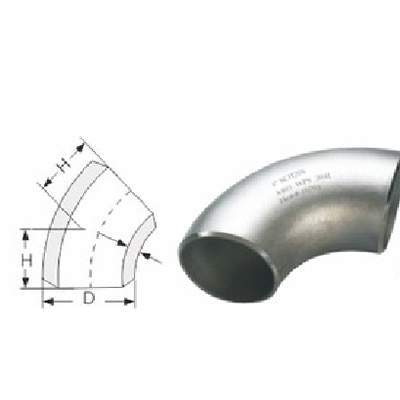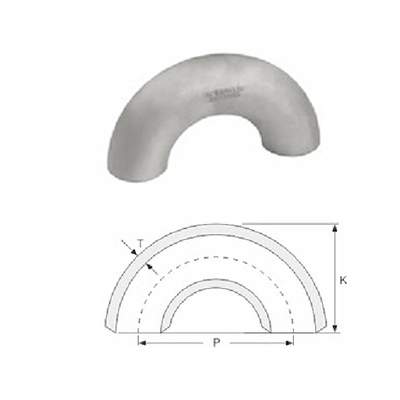Introduction

Elbow pipes, often simply referred to as elbows, are fundamental components in plumbing systems. These fittings play a crucial role in altering the direction of pipes, enabling the efficient routing of water, gas, or other fluids. While often overlooked, elbows significantly impact the performance, durability, and overall functionality of plumbing systems. This comprehensive guide delves into the numerous advantages of using elbow pipes, explores the diverse types available, and provides insights into selecting the appropriate elbow for specific plumbing applications.
Understanding Elbow Pipes
An elbow pipe is a curved fitting that seamlessly connects two straight sections of pipe at a predetermined angle. The most common angles are 45 and 90 degrees, although other angles exist to accommodate unique installation requirements. Elbows are typically manufactured from materials such as copper, PVC, CPVC, and cast iron, each possessing distinct advantages in terms of durability, corrosion resistance, and cost-effectiveness.
Key Benefits of Using Elbow Pipes
Enhanced Flexibility in Piping Design
Elbow pipes offer unparalleled flexibility in designing intricate piping systems. They allow for precise routing of pipes around obstacles and through confined spaces, optimizing space utilization and minimizing the need for additional fittings. This flexibility is particularly valuable in residential, commercial, and industrial settings where space constraints are common.
Improved Flow Rate and Reduced Pressure Drop
Properly sized and installed elbows contribute to maintaining a consistent flow rate throughout the plumbing system. By minimizing turbulence and reducing friction, elbows help to optimize water pressure and minimize energy consumption. This is especially critical in applications requiring high flow rates, such as fire sprinkler systems or industrial processes.
Enhanced Durability and Longevity
Elbow pipes are engineered to withstand rigorous conditions, including high pressures and temperatures. They exhibit excellent resistance to corrosion, wear, and tear, ensuring long-lasting performance and reducing the need for frequent replacements. This durability is particularly important in harsh environments, such as coastal regions or areas with extreme temperature fluctuations.
Simplified Installation and Maintenance
Elbow pipes are relatively easy to install, requiring minimal tools and expertise. They can be joined to straight pipe sections using various methods, including soldering, gluing, or threading. This ease of installation reduces labor costs and minimizes disruption to plumbing systems. Additionally, elbows are easily accessible for maintenance and repair, simplifying troubleshooting and reducing downtime.
Wide Range of Applications
Elbow pipes find application in a diverse range of plumbing systems, encompassing residential, commercial, and industrial settings. They are commonly used in water supply systems, drainage systems, gas lines, and HVAC systems. The versatility of elbow pipes makes them essential components in modern plumbing infrastructure.
Cost-Effective Solution
Elbow pipes offer a cost-effective solution for plumbing projects. They strike a balance between performance and affordability, making them a popular choice for both DIY enthusiasts and professional plumbers. By optimizing the design and minimizing the number of fittings required, elbow pipes can help to reduce overall project costs.
Types of Elbow Pipes
- 90-Degree Elbow: The most common type of elbow, used to create a sharp 90-degree turn in a pipe.
- 45-Degree Elbow: Provides a gradual change in direction, reducing stress on the pipe and fittings.
- Long-Radius Elbow: Offers a smoother transition between pipe sections, minimizing turbulence and improving flow.
- Street Elbow: Has one threaded end and one plain end, allowing for connection to different types of fittings.
- Reducer Elbow: Changes the diameter of a pipe while also changing its direction.
Choosing the Right Elbow Pipe
When selecting elbow pipes for your plumbing project, consider the following factors:
- Material: Choose a material that is compatible with the fluid being transported and the environmental conditions.
- Angle: Select an angle that provides the desired change in direction.
- Size: Ensure that the elbow pipe is the correct size to fit your existing piping.
- Pressure Rating: Choose an elbow pipe with a pressure rating that exceeds the maximum expected pressure in the system.
Elbow Pipes in Plumbing Systems: A Comparative Table

| Feature | 90-Degree Elbow | 45-Degree Elbow | Long-Radius Elbow | Street Elbow | Reducer Elbow |
|---|---|---|---|---|---|
| Angle | 90 degrees | 45 degrees | Variable radius | 90 degrees | Variable |
| Application | General purpose | Gradual turns | Reducing turbulence | Connecting threaded and non-threaded pipes | Changing pipe diameter |
| Advantages | Common and readily available | Reduces stress on pipes | Smooth flow | Versatile | Efficient space utilization |
| Disadvantages | Can cause turbulence | May require additional fittings | More expensive | Limited applications | May affect flow rate |
Conclusion
Elbow pipes are indispensable components in plumbing systems, offering numerous benefits in terms of flexibility, durability, and cost-effectiveness. By understanding the diverse types of elbows and their applications, you can make informed decisions when designing and installing plumbing systems. Whether you are a homeowner, contractor, or plumber, incorporating elbow pipes into your projects will ensure optimal performance and longevity.
FAQ
Q: What is the difference between a 90-degree elbow and a 45-degree elbow?
A: A 90-degree elbow creates a sharp turn in the pipe, while a 45-degree elbow provides a more gradual bend.
Q: How do I choose the right size elbow pipe?
A: The size of the elbow pipe should match the diameter of the pipes it connects. Measure the pipe diameter and select an elbow with the same or a slightly larger size.
Q: Can I use a PVC elbow for a hot water line?
A: Yes, you can use a PVC elbow for a hot water line, but it’s important to choose a PVC type rated for high temperatures, such as CPVC.
Q: What is the purpose of a reducer elbow?
A: A reducer elbow is used to transition from a larger pipe diameter to a smaller one, often in plumbing systems where the pipe size changes.
Q: How do I install an elbow pipe?
A: The installation method depends on the type of pipe and elbow. Common methods include soldering, gluing, or threading. Consult specific instructions for your materials and tools.
